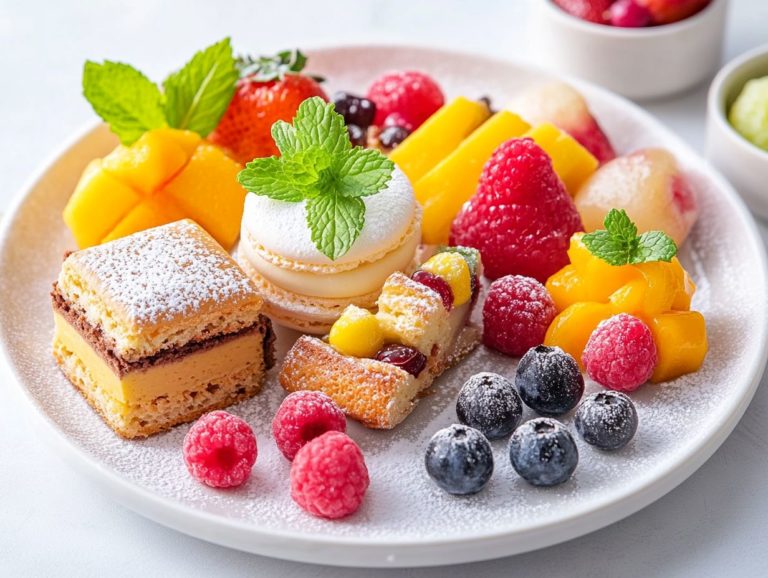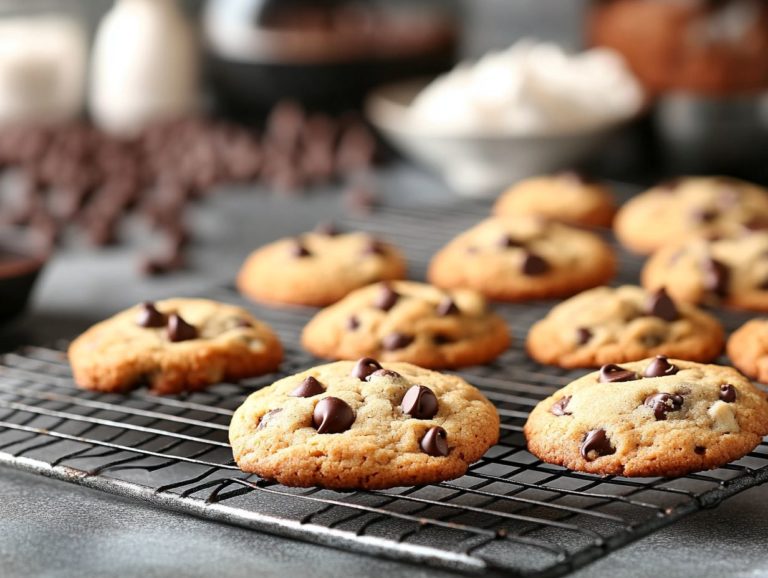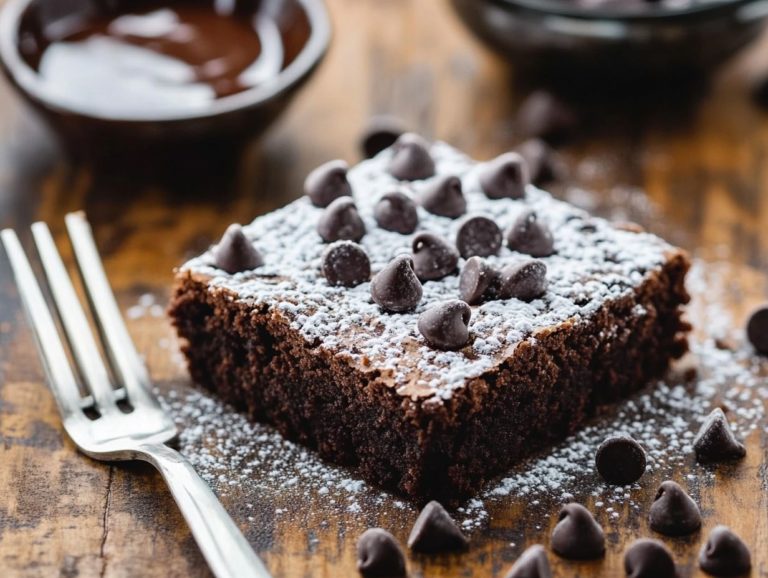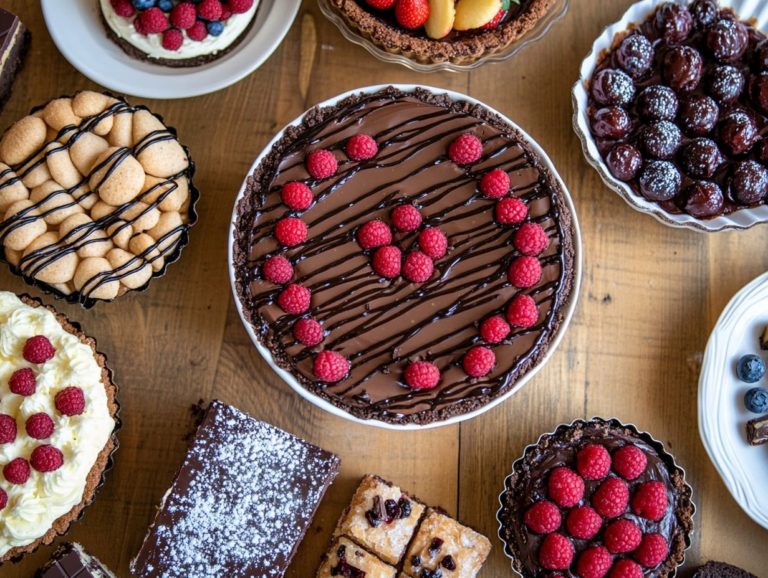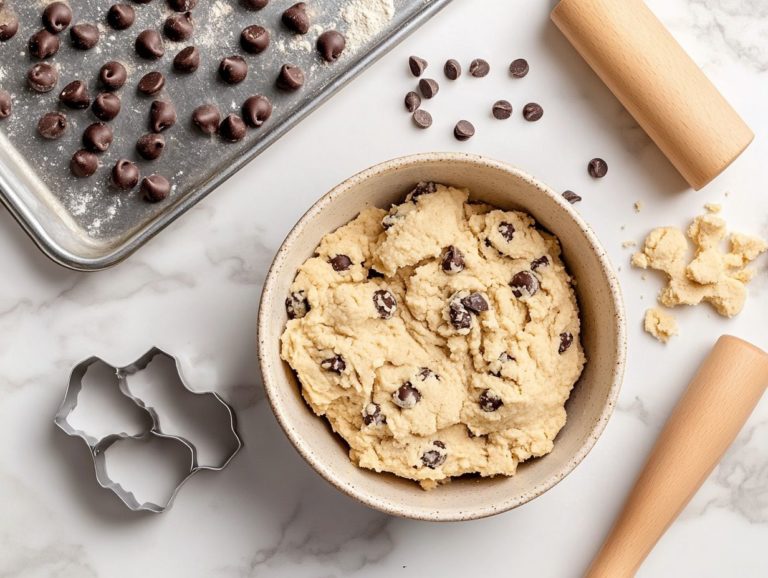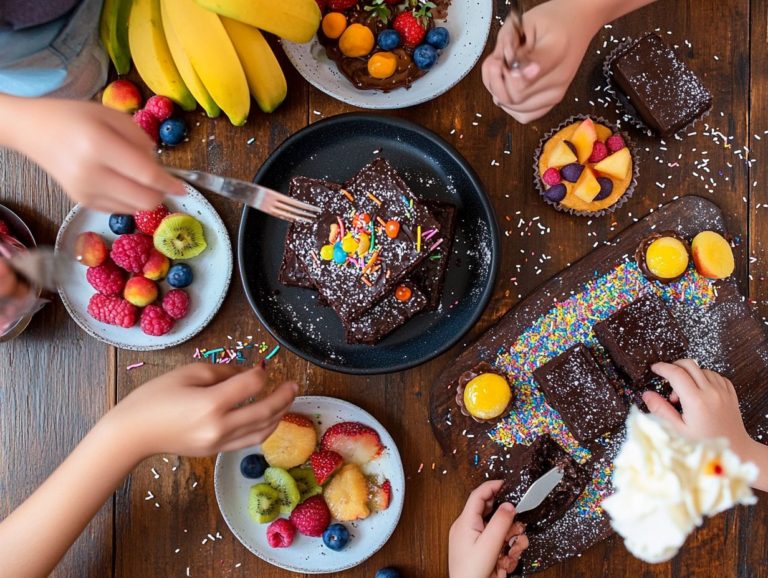Gluten-Free Dessert Hacks: Substitutes You Can Use
Contents
- Embracing a Gluten-Free Lifestyle
- Understanding Gluten Sensitivity and Wheat Allergy
- 2. Gluten Sensitivity
- 3. Wheat Allergy
- How to Make Gluten-Free Desserts?
- What are Some Gluten-Free Dessert Hacks?
- 1. Use Gluten-Free Cookies as Crust
- 2. Make Ice Cream Sandwiches with Gluten-Free Wafers
- 3. Use Nut Flours for Breading
- Frequently Asked Questions
- What are some common substitutes for gluten in dessert recipes?
- Can I use regular flour substitutes in gluten-free desserts?
- What can I use as a binder in gluten-free desserts?
- Are there any natural sweeteners that are gluten-free?
- Can I use gluten-free cake mix to make other types of desserts?
- How can I make a gluten-free crust for a pie or tart?
Embracing a Gluten-Free Lifestyle
Transitioning to a gluten-free lifestyle can be transformative, whether it’s due to medical necessity or personal choice. It can help with health conditions and introduce you to new culinary adventures using gluten-free flours and ingredients.
The reasons for eliminating gluten from your diet are diverse and compelling, including celiac disease, gluten sensitivity, and wheat allergies. Who says that going gluten-free means sacrificing the joy of indulging in delicious desserts?
Get ready to indulge in scrumptious gluten-free treats! You can whip up delightful gluten-free brownies and cookies that satisfy your cravings.
Discover innovative substitutes and helpful hacks, like cake mix hacks and doctoring cake mix, along with delightful recipes that let you enjoy sweet moments without gluten.
Prepare yourself for delicious desserts without guilt, such as gluten-free chocolate cake and gluten-free cupcakes, proving that a gluten-free lifestyle can be enjoyable and satisfying.
Key Takeaways:
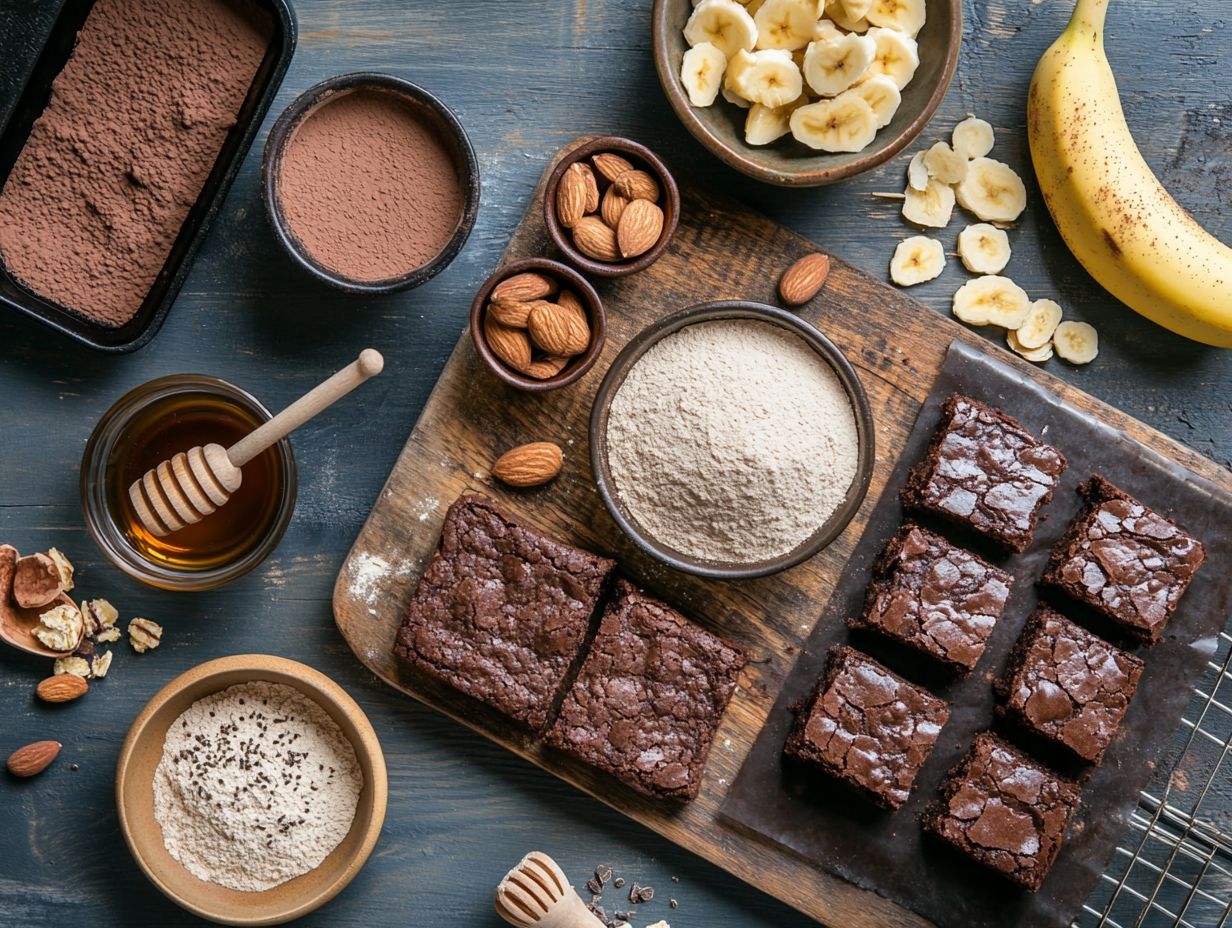
- Swap gluten for tasty alternatives like almond flour, rice flour, and coconut flour to create delicious desserts for those with gluten sensitivities, celiac disease, or wheat allergies.
- Replace processed sugar with natural sweeteners like honey or maple syrup for healthier gluten-free dessert options. You can even try baking gluten-free pie or pudding!
- Get creative with substitutes like nut butters, gluten-free cookies, applesauce, and nut flours for added texture and flavor. Explore gluten-free cake mix recipes for more inspiration!
Why Would Someone Follow a Gluten-Free Diet?
Embracing a gluten-free diet is crucial for individuals dealing with the issues of Celiac Disease, gluten sensitivity, or wheat allergies. Celiac Disease is an illness where eating gluten damages the intestines and can provoke severe reactions. Gluten is a protein found in wheat, barley, and rye. If you have gluten sensitivity, you may face digestive troubles or various other symptoms upon consuming gluten, even without a Celiac diagnosis.
A wheat allergy can also cause reactions triggered by wheat-containing products. Therefore, understanding the nuances of these conditions is essential for anyone exploring gluten-free resources and alternatives.
1. Celiac Disease
Celiac Disease is a serious autoimmune disorder that requires strict adherence to a gluten-free diet. This condition occurs when your immune system mistakenly targets the lining of your small intestine upon consuming gluten. Over time, this damage can impede nutrient absorption and lead to symptoms like abdominal pain, bloating, diarrhea, and fatigue.
For you, avoiding gluten is not just a lifestyle choice; it s a critical necessity for maintaining your health and well-being. Fortunately, the increasing availability of gluten-free products, including various cake mixes and baking essentials, has made it easier to create and enjoy delicious meals without compromising your health.
There are numerous resources available, from local health food stores to online retailers, ensuring you can easily find suitable gluten-free options without feeling deprived.
Understanding Gluten Sensitivity and Wheat Allergy
2. Gluten Sensitivity
Gluten sensitivity, often referred to as non-celiac gluten sensitivity, can lead to symptoms that mimic Celiac Disease. However, it doesn t inflict the same level of intestinal damage.
If you experience this condition, you might find yourself dealing with a range of symptoms such as bloating, abdominal pain, fatigue, and headaches. These symptoms can significantly disrupt your daily life. Unlike Celiac Disease, which triggers an autoimmune response to gluten that permanently damages the intestinal lining, gluten sensitivity does not cause such detrimental changes.
Managing this sensitivity often requires dietary adjustments, particularly steering clear of gluten-containing grains.
For those of you who want to indulge your sweet tooth while maintaining a gluten-free lifestyle, there are plenty of delectable options. Scrumptious desserts like gluten-free brownies, gluten-free cookies, almond flour brownies, coconut macaroons, and flourless chocolate cake offer satisfying alternatives.
When baking, consider substituting traditional flour with gluten-free blends. You can also use xanthan gum to improve texture and explore natural sweeteners to keep your treats delightful without sacrificing flavor.
3. Wheat Allergy
A wheat allergy is your body’s way of reacting to proteins found in wheat. This means you ll need to eliminate wheat and gluten-containing products from your diet completely.
Understanding this allergy is vital, as even a trace amount of wheat can unleash a cascade of symptoms. These symptoms range from hives and digestive troubles to potentially life-threatening allergic reactions. It s best to avoid store-bought gluten products altogether.
For those affected, strict avoidance of wheat is non-negotiable. This involves a keen eye for reading labels and selecting safe alternatives. The good news is, there are plenty of gluten-free resources available, including certified gluten-free grains like:
- Rice
- Quinoa
- Corn
You ll also find a variety of gluten-free flours that can serve as excellent substitutes, such as:
- Almond flour
- Coconut flour
Many grocery stores have started to feature dedicated gluten-free sections, which can be a game changer for anyone navigating a wheat-free lifestyle. You can also discover a wealth of recipes and meal ideas online. This gives you the power to enjoy satisfying meals while steering clear of wheat-based ingredients.
How to Make Gluten-Free Desserts?
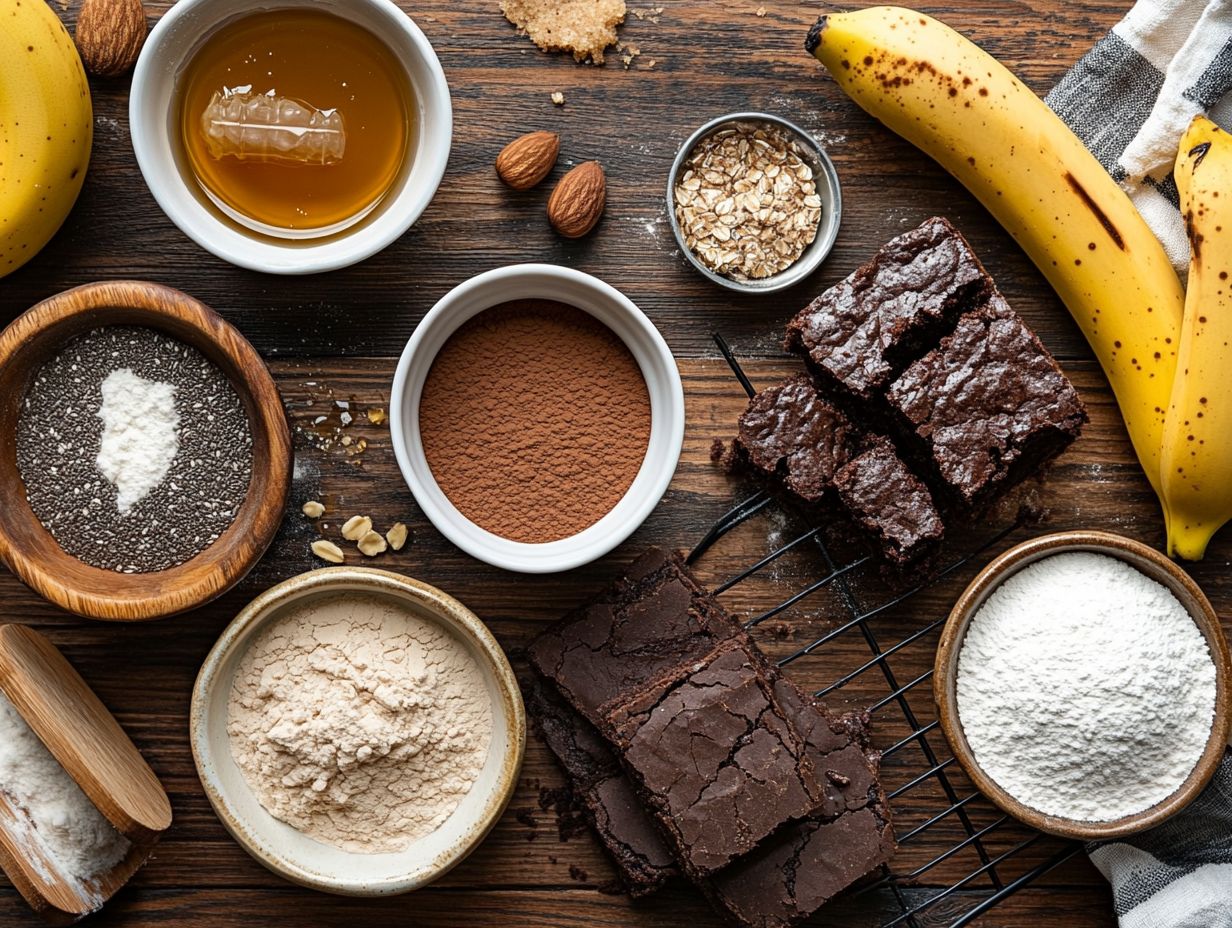
Creating delectable gluten-free desserts can be fun and simple when you embrace gluten-free flour alternatives and innovative cake mix hacks. These strategies enhance your baking journey while ensuring that flavor remains uncompromised. You can also try using gluten-free cake mix from brands like Betty Crocker or Bob s Red Mill for convenience.
1. Use Gluten-Free Flour Alternatives
Utilizing gluten-free flour alternatives is essential for crafting exquisite gluten-free cakes and desserts that are both flavorful and satisfying. Consider experimenting with gluten-free cake mix recipes for the best results.
Among the most popular choices available to you are:
- Almond flour: Rich and nutty flavor, ideal for moist cakes and cookies.
- Coconut flour: High fiber content, lends a light, airy texture, perfect for fruity flavors in cakes.
- Rice flour: Neutral taste, versatile for various baked treats.
These flours not only elevate the taste of your desserts but also come packed with nutritional benefits. This way, you can indulge in delightful cakes without sacrificing your health.
Ready to explore gluten-free baking? Try out these recipes and share your own gluten-free baking experiences!
2. Substitute Sugar with Natural Sweeteners
Substituting sugar with natural sweeteners can elevate the flavor profile of your gluten-free desserts while keeping health benefits intact.
By incorporating natural sweeteners like honey, maple syrup, and stevia, you introduce unique flavors and reap various nutritional advantages in your baked goods. For example, honey adds moisture and richness, making it an excellent choice for cookies and cakes. Maple syrup brings a warm, earthy taste that s perfect for gluten-free pancakes and muffins, while stevia serves as a fantastic low-calorie alternative, sweetening your recipes without the added sugar ideal for those mindful of their calorie intake.
To effectively integrate these sweeteners into your gluten-free recipes, it s essential to adjust the liquid content and baking times accordingly since each sweetener behaves differently in the oven. Don t hesitate to experiment with different combinations; a honey-glazed almond flour cake or maple syrup-infused gluten-free brownies could very well become your family’s new favorites.
3. Try Dairy-Free Options
For those who are dairy-free, transforming traditional recipes into gluten-free and dairy-free delights requires clever substitutions that preserve both taste and texture. Consider using creamy almond milk instead of cow’s milk; it introduces a subtle nutty flavor and a wonderful consistency for baking.
Coconut cream is another stellar option, bringing richness and moisture that work wonders in cakes and frostings. When you’re looking for egg replacements, flaxseed meal mixed with water or applesauce can effectively bind your ingredients together, ideal for gluten-free desserts. You can also add sour cream or melted butter for a richer texture.
With these innovative alternatives at your disposal, crafting delicious treats is an exciting adventure that everyone will love, no matter their dietary restrictions.
4. Use Nut Butters as Binders
Nut butters, such as almond and peanut butter, are exceptional binding agents in gluten-free baking, infusing your desserts with moisture and flavor. They are particularly useful when making gluten-free brownies or unique cake recipes.
By incorporating these healthy nut butters into your recipes for cakes, cookies, and bars, you enhance texture and introduce healthy fats and proteins, elevating your gluten-free desserts. For instance, you can try making cake batter cookies or pancakes using almond or peanut butter. Swapping out some of the flour for nut butters achieves a denser, fudgier consistency that many find utterly irresistible.
Using almond butter in a gluten-free cookie recipe helps hold the ingredients together while adding a rich, nutty flavor that elevates the entire treat. Nut butters can also reduce the need for extra binding agents, streamlining your ingredient list and boosting the overall healthiness of your baked goods. For those looking for gluten-free resources, using nut butters is a key tip in gluten-free baking and creating gluten-free desserts.
What are Some Gluten-Free Dessert Hacks?
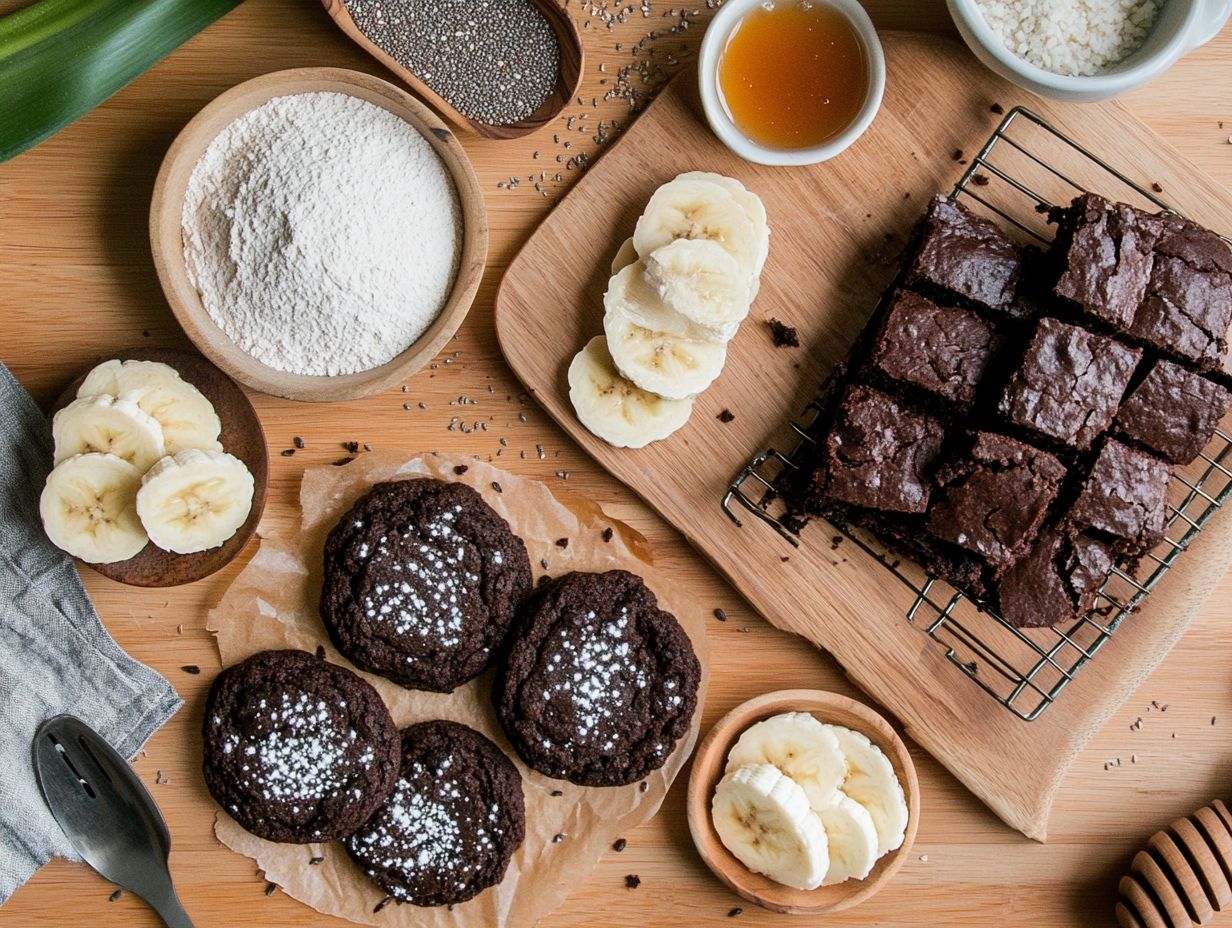
Gluten-free dessert hacks can elevate ordinary ingredients into extraordinary delights, allowing you to savor gluten-free options such as indulgent cake batter cookies and luscious ice cream sandwiches with ease. Try incorporating store-bought gluten-free and dairy-free ingredients for more variety.
Try these tips out today and transform your dessert game!
1. Use Gluten-Free Cookies as Crust
Try using gluten-free cookies as a pie or dessert crust. This simple trick boosts flavor and makes baking a breeze!
These cookie crusts bring a delightful twist to traditional recipes and cater to those with dietary restrictions. For a successful crust, choose cookies with bold flavors like almond, cocoa, or vanilla. These options provide a robust foundation that pairs beautifully with fillings such as creamy cheesecakes or fruity pies.
Don’t forget to explore gluten-free brands like Pamela s Products or Simple Mills for even more choices.
For optimal results, lightly crush the cookies to achieve a fine crumb. Then, mix them with a touch of melted butter to bind the mixture. Be sure to pre-bake the crust before adding the filling this step ensures a crispy texture that elevates the entire dessert experience. This method works perfectly for gluten-free pies and gluten-free tarts.
2. Make Ice Cream Sandwiches with Gluten-Free Wafers
Creating ice cream sandwiches with gluten-free wafers offers a delightful and indulgent way to enjoy a classic treat while accommodating gluten sensitivities. These charming confections can transform any dessert table into a hit!
Start by selecting the perfect gluten-free wafers, which will serve as the delightful base for your sandwiches. Consider options like almond or coconut-crisp wafers for a nutty twist. Brands such as Betty Crocker and XOXO Baking Company offer excellent gluten-free options.
As for the ice cream filling, the flavor possibilities are endless think rich chocolate, creamy vanilla, or even adventurous matcha and refreshing mint! For a unique twist, try gluten-free chocolate or gluten-free vanilla ice creams.
To elevate your sandwiches even further, roll the edges in crushed nuts, colorful sprinkles, or shredded coconut. This adds an eye-catching finish that is sure to impress! Present these exquisite treats on a beautiful platter or in individual cupcake liners. They will captivate attention and invite everyone to indulge in your gluten-free delights.
These delightful treats also double as gluten-free snacks everyone will love!
3. Use Nut Flours for Breading
Nut flours are an exceptional gluten-free alternative for breading, infusing flavor and texture into your favorite fried dishes. Options like almond and hazelnut flours enhance the crunchiness of your coatings while adding a subtly nutty taste that elevates any recipe.
In contrast to traditional breadcrumbs, nut flours are packed with healthy fats and proteins, making them a nourishing choice for those who wish to enjoy gluten-free treats without compromising on flavor. Their versatility allows for use in various dishes, from crispy chicken to delightful baked goods.
By incorporating these nutritious options into your culinary repertoire, you open the door to creative cooking experiences while adding an extra nutritional boost to your meals. This is a great way to enhance your gluten-free pantry and make your meals more inclusive.
Delicious Gluten-Free Fruit Crisp Recipe
A fruit crisp made with gluten-free oats offers a delightful and healthy dessert option that everyone can appreciate. This dish is a perfect addition to your collection of gluten-free desserts.
This versatile dish can easily be customized to showcase an array of fresh seasonal fruits, making it ideal for using whatever you may have in your pantry or fridge.
Whether you prefer tart apples, sumptuous peaches, vibrant berries, or even tropical mangoes, the possibilities are truly endless. For added flavor, consider incorporating flavor extracts like vanilla or almond.
The harmony of naturally sweet fruits paired with a crunchy oat topping creates a satisfying contrast in both texture and flavor. Those with dietary restrictions can enjoy this wholesome dessert without a second thought. It’s also a great choice for gluten-free treats.
Satisfying your cravings while maintaining a health-conscious approach is incredibly easy, so everyone can join in on this delicious experience right now! Incorporate it into your repertoire of gluten-free baking tips for consistently great results.
Watch the video above for a step-by-step guide on making this fruit crisp!
Frequently Asked Questions
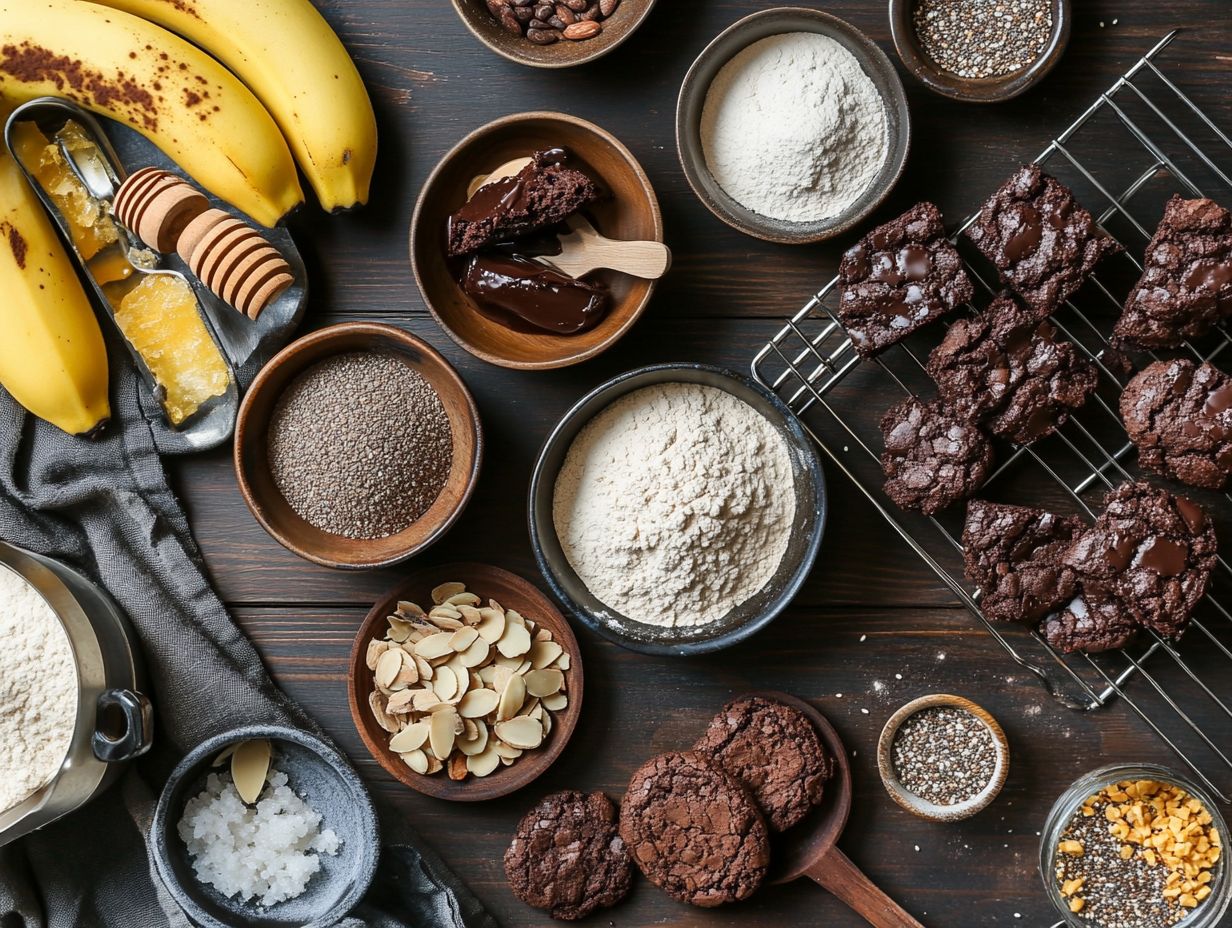
What are some common substitutes for gluten in dessert recipes?
Some common substitutes for gluten in dessert recipes include almond flour, coconut flour, oats, tapioca flour, and rice flour. Explore a variety of gluten-free flours from brands like King Arthur or Open Nature to expand your baking possibilities.
Can I use regular flour substitutes in gluten-free desserts?
No, regular flour substitutes like wheat flour or all-purpose flour will not work in gluten-free desserts. It’s important to use gluten-free flour alternatives to make your dessert truly gluten-free.
Consider using gluten-free cake mix for ease and convenience in your gluten-free baking.
What can I use as a binder in gluten-free desserts?
Eggs are a common binder in gluten-free desserts, as they help hold the ingredients together. Other options include chia seeds, flaxseed, and xanthan gum.
When using gluten-free cake mix recipes, consider adding an extra egg for better binding.
Are there any natural sweeteners that are gluten-free?
Yes, many natural sweeteners are gluten-free, including honey, maple syrup, and agave nectar. Just be sure to check the label to ensure they are certified gluten-free.
These sweeteners work wonderfully in gluten-free cupcakes and other gluten-free baked goods.
Can I use gluten-free cake mix to make other types of desserts?
Yes, gluten-free cake mix can be used to make other types of desserts, such as cookies, brownies, and even donuts! Just be sure to adjust the baking time and temperature accordingly.
Consider doctoring cake mix with ingredients like applesauce or sour cream for a more homemade cake mix feel.
How can I make a gluten-free crust for a pie or tart?
You can make a gluten-free crust using a combination of gluten-free flours, such as almond flour and coconut flour, along with a little bit of butter or coconut oil.
Press the mixture into the pan and bake before filling with your desired filling. This method is ideal for creating a perfect gluten-free pie.

